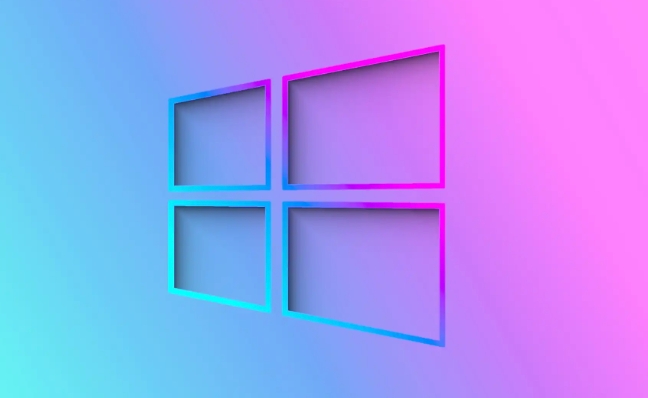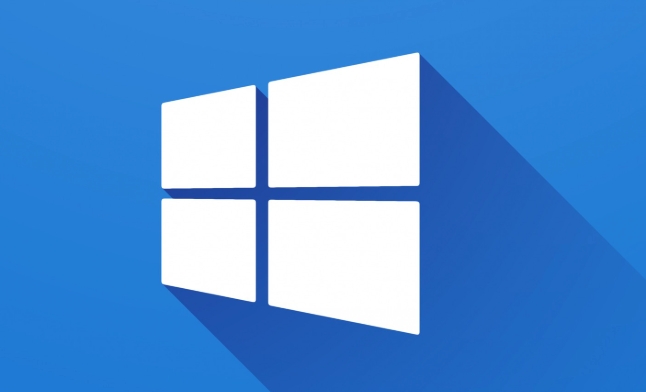After installing Windows 10, you should first update Windows and install drivers via Settings > Update & Security > Windows Update, then address missing hardware drivers through Device Manager, driver tools, or manufacturer websites. Next, set up a non-admin user account, adjust personalization and privacy settings, and enable backups. Then install essential software like a browser, antivirus, office suite, compression tool, media player, and password manager while disabling unnecessary startup programs. Finally, tweak system settings by enabling Storage Sense, adjusting power plans, increasing virtual memory if needed, enabling God Mode for advanced access, and customizing file explorer behavior such as showing file extensions for better usability.

After installing Windows 10, there are several key steps you should take to get your system running smoothly and securely. It’s not just about getting it working — it's about setting it up the right way.

Update Windows and Install Drivers
Right after installation, one of the first things you’ll want to do is check for updates. Even if you used a recent ISO file, there might be newer patches available.
Go to Settings > Update & Security > Windows Update, and click “Check for updates.” Let it download and install everything.

At the same time, make sure all your hardware works properly. You might notice issues like no sound, Wi-Fi not working, or low screen resolution — these usually point to missing drivers.
You can either:
- Use Device Manager to manually update drivers
- Run a driver updater tool (like Driver Booster, though be cautious with free versions)
- Visit your PC/laptop manufacturer’s website and download the correct drivers
If you’re on a desktop, especially a custom build, you’ll likely need to grab chipset, audio, and GPU drivers separately.

Set Up Your User Environment
Once the system is updated, it’s time to personalize and prepare your environment.
Start by creating a user account that isn’t an admin — use it for daily tasks to reduce risk from malware or accidental changes. Keep one admin account for installing software and making system-level changes.
Then adjust basic settings:
- Change the desktop background and theme colors
- Enable dark mode under Settings > Personalization
- Adjust privacy settings — especially location, camera, and microphone access
- Set up OneDrive or another cloud sync service if needed
Also, don’t forget to enable File History or set up a backup plan early — many people skip this until it’s too late.
Install Essential Software and Security Tools
A fresh Windows install means starting over with apps. Here’s what most users will want to install:
- A modern browser like Chrome, Edge, or Firefox
- Antivirus — even though Windows Defender is built-in, some prefer third-party options
- Office suite — Microsoft Office or free alternatives like LibreOffice
- Compression tools like 7-Zip or WinRAR
- Media players (VLC is a solid choice)
- Password manager like Bitwarden or LastPass
Also, consider disabling unnecessary startup programs to improve boot speed. Press Ctrl Shift Esc to open Task Manager, then go to the Startup tab and disable what you don’t need at launch.
And while you're at it, check which apps are using the most resources in Task Manager’s Processes tab — sometimes preinstalled bloatware sneaks in.
Tweak System Settings for Performance and Usability
Windows 10 gives you a lot of control over how your system behaves. Some tweaks worth doing:
- In Settings > System > Storage, turn on Storage Sense to automatically delete temporary files
- Under System > Power, switch to High Performance mode or tweak existing plans
- Go to System > About > Advanced system settings and increase virtual memory if you have less than 16GB RAM
- Enable God Mode for easy access to advanced settings (create a folder named
GodMode.{ED7BA470-8E54-465E-825C-99712043E01C}on the desktop)
Also, customize context menus and file explorer behavior — for example, always show file extensions (View > Options > Change folder and search options) so you can spot hidden file types more easily.
That’s basically it. Not complicated, but skipping any of these steps could lead to performance issues, security gaps, or wasted time down the road.
The above is the detailed content of What to do after installing Windows 10. For more information, please follow other related articles on the PHP Chinese website!

Hot AI Tools

Undress AI Tool
Undress images for free

Undresser.AI Undress
AI-powered app for creating realistic nude photos

AI Clothes Remover
Online AI tool for removing clothes from photos.

Clothoff.io
AI clothes remover

Video Face Swap
Swap faces in any video effortlessly with our completely free AI face swap tool!

Hot Article

Hot Tools

Notepad++7.3.1
Easy-to-use and free code editor

SublimeText3 Chinese version
Chinese version, very easy to use

Zend Studio 13.0.1
Powerful PHP integrated development environment

Dreamweaver CS6
Visual web development tools

SublimeText3 Mac version
God-level code editing software (SublimeText3)

Hot Topics
 How to install Android apps on Linux?
Mar 19, 2024 am 11:15 AM
How to install Android apps on Linux?
Mar 19, 2024 am 11:15 AM
Installing Android applications on Linux has always been a concern for many users. Especially for Linux users who like to use Android applications, it is very important to master how to install Android applications on Linux systems. Although running Android applications directly on Linux is not as simple as on the Android platform, by using emulators or third-party tools, we can still happily enjoy Android applications on Linux. The following will introduce how to install Android applications on Linux systems.
 How to install Podman on Ubuntu 24.04
Mar 22, 2024 am 11:26 AM
How to install Podman on Ubuntu 24.04
Mar 22, 2024 am 11:26 AM
If you have used Docker, you must understand daemons, containers, and their functions. A daemon is a service that runs in the background when a container is already in use in any system. Podman is a free management tool for managing and creating containers without relying on any daemon such as Docker. Therefore, it has advantages in managing containers without the need for long-term backend services. Additionally, Podman does not require root-level permissions to be used. This guide discusses in detail how to install Podman on Ubuntu24. To update the system, we first need to update the system and open the Terminal shell of Ubuntu24. During both installation and upgrade processes, we need to use the command line. a simple
 How to Install and Run the Ubuntu Notes App on Ubuntu 24.04
Mar 22, 2024 pm 04:40 PM
How to Install and Run the Ubuntu Notes App on Ubuntu 24.04
Mar 22, 2024 pm 04:40 PM
While studying in high school, some students take very clear and accurate notes, taking more notes than others in the same class. For some, note-taking is a hobby, while for others, it is a necessity when they easily forget small information about anything important. Microsoft's NTFS application is particularly useful for students who wish to save important notes beyond regular lectures. In this article, we will describe the installation of Ubuntu applications on Ubuntu24. Updating the Ubuntu System Before installing the Ubuntu installer, on Ubuntu24 we need to ensure that the newly configured system has been updated. We can use the most famous "a" in Ubuntu system
 Detailed steps to install Go language on Win7 computer
Mar 27, 2024 pm 02:00 PM
Detailed steps to install Go language on Win7 computer
Mar 27, 2024 pm 02:00 PM
Detailed steps to install Go language on Win7 computer Go (also known as Golang) is an open source programming language developed by Google. It is simple, efficient and has excellent concurrency performance. It is suitable for the development of cloud services, network applications and back-end systems. . Installing the Go language on a Win7 computer allows you to quickly get started with the language and start writing Go programs. The following will introduce in detail the steps to install the Go language on a Win7 computer, and attach specific code examples. Step 1: Download the Go language installation package and visit the Go official website
 How to install Go language under Win7 system?
Mar 27, 2024 pm 01:42 PM
How to install Go language under Win7 system?
Mar 27, 2024 pm 01:42 PM
Installing Go language under Win7 system is a relatively simple operation. Just follow the following steps to successfully install it. The following will introduce in detail how to install Go language under Win7 system. Step 1: Download the Go language installation package. First, open the Go language official website (https://golang.org/) and enter the download page. On the download page, select the installation package version compatible with Win7 system to download. Click the Download button and wait for the installation package to download. Step 2: Install Go language
 How to download 360 Secure Browser on your computer
Apr 12, 2024 pm 01:52 PM
How to download 360 Secure Browser on your computer
Apr 12, 2024 pm 01:52 PM
How to download 360 Secure Browser on your computer? It is a very secure web browser software. This browser is very rich in functions and very simple to operate. Using 360 Secure Browser to browse the web can protect user privacy and security very well. Many people like to use this browser. Browser office, but many people still don’t know how to download and install 360 Secure Browser on their computers. This article will give you a detailed introduction to the installation process of the 360 ??Safe Browser PC version, hoping to help you solve the problem. Overview of the installation process under the computer version of 360 Secure Browser 1. On the computer’s main page, find “360 Software Manager” and enter (as shown in the picture). 2. Open 360 Software Manager and find the search box (as shown in the picture). 3. Click Search
 PHP FFmpeg extension installation guide: easy-to-follow tutorial
Mar 28, 2024 pm 02:17 PM
PHP FFmpeg extension installation guide: easy-to-follow tutorial
Mar 28, 2024 pm 02:17 PM
PHPFFmpeg Extension Installation Guide: Simple and easy-to-understand tutorial In the process of website development, sometimes we need to process various multimedia files, such as audio, video, etc. FFmpeg is a powerful multimedia processing tool that can process audio, video and other formats, and supports various transcoding, cutting and other operations. The PHPFFmpeg extension is an extension library that calls FFmpeg functions in PHP. It can be used to process multimedia files easily. Below we will introduce PHPF in detail
 How to open Python after downloading
Apr 03, 2024 pm 05:12 PM
How to open Python after downloading
Apr 03, 2024 pm 05:12 PM
To open the Python you just downloaded, follow these steps: Place the installer in an easily accessible location. Double-click the installer icon and follow the on-screen instructions. Once the installation is complete, enter "python" in a command prompt or terminal window to start a Python interactive shell.






